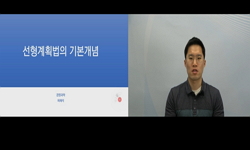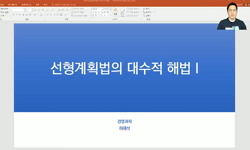This research presents studies on an improved method to predict the thermal conductivity of woven fabric composites, the effects of geometric structures of woven fabric composites on thermal conductivity, and structural optimization to improve the the...
http://chineseinput.net/에서 pinyin(병음)방식으로 중국어를 변환할 수 있습니다.
변환된 중국어를 복사하여 사용하시면 됩니다.
- 中文 을 입력하시려면 zhongwen을 입력하시고 space를누르시면됩니다.
- 北京 을 입력하시려면 beijing을 입력하시고 space를 누르시면 됩니다.

열전도도 향상을 위한 직물섬유 복합재의 최적구조 설계 = Structural Optimization for Improvement of Thermal Conductivity of Woven Fabric Composites
한글로보기https://www.riss.kr/link?id=A102957242
- 저자
- 발행기관
- 학술지명
- 권호사항
-
발행연도
2017
-
작성언어
-
- 주제어
-
KDC
500
-
등재정보
KCI등재,ESCI
-
자료형태
학술저널
- 발행기관 URL
-
수록면
26-34(9쪽)
-
KCI 피인용횟수
0
- DOI식별코드
- 제공처
- 소장기관
-
0
상세조회 -
0
다운로드
부가정보
다국어 초록 (Multilingual Abstract)
This research presents studies on an improved method to predict the thermal conductivity of woven fabric composites, the effects of geometric structures of woven fabric composites on thermal conductivity, and structural optimization to improve the thermal conductivity using a genetic algorithm. The geometric structures of woven fabric composites were constructed numerically using the information generated on waviness, thickness, and width of fill and warp tows. Thermal conductivities of the composites were obtained using a thermal-electrical analogy. In the genetic algorithm, the chromosome string consisted of thickness and width of the fill and warp tows, and the objective function was the maximum thermal conductivity of woven fabric composites. The results confirmed that an improved method to predict the thermal conductivity was built successfully, and the inter-tow gap effect on the composite`s thermal conductivity was analyzed suggesting that thermal conductivity of woven fabric composites was reduced as the gap between tows increased. For structural design, optimized structures for improving the thermal conductivity were analyzed and proposed. Generally, axial thermal conductivity of the fiber tow contributed more to thermal conductivity of woven fabric composites than transverse thermal conductivity of the tows.
참고문헌 (Reference)
1 문철진, "마이크로 유전자 알고리즘을 이용한 외부 수압을 받는 필라멘트 와인딩 복합재 원통의 최적 설계" 한국복합재료학회 23 (23): 14-20, 2010
2 Dasgupta, A., "Three-Dimensional Modeling of Woven-Fabric Composites for Effective Thermo-Mechanical and Thermal Properties" 56 : 209-223, 1996
3 Kim, D. H., "Static Aeroelastic Optimization of a Composite Using Genetic Algorithm" 13 (13): 61-71, 2000
4 Le-Manh, T., "Stacking Sequence Optimization for maximum strengths of laminated composite plates using genetic algorithm and isogeometric analysis" 116 : 357-363, 2014
5 Scida, D., "Prediction of the Elastic Behaviour of Hybrid and Non-hybrid Woven Composites" 57 : 1727-1740, 1997
6 Dasgupta, A., "Orthotropic Thermal Conductivity of Plain-Weave Fabric Composites Using a Homogenization Technique" 26 (26): 2736-2758, 1992
7 Seo, B.H., "Model for Thermal Conductivities in Spun Yarn Carbon Fabric Composites" 791-798, 2005
8 Barbero, E. J., "Introduction to Composite Materials Design" Taylor & Francis Group 1999
9 Kim, M., "Geometry Effect on Mechnical Properties of Woven Fabric Composites" 18 : 1985-1993, 2011
10 Goldberg, D. E., "Genetic Algorithms in Search, Optimization &Machine Learning" Addison Wesley Pub. Co. 1989
1 문철진, "마이크로 유전자 알고리즘을 이용한 외부 수압을 받는 필라멘트 와인딩 복합재 원통의 최적 설계" 한국복합재료학회 23 (23): 14-20, 2010
2 Dasgupta, A., "Three-Dimensional Modeling of Woven-Fabric Composites for Effective Thermo-Mechanical and Thermal Properties" 56 : 209-223, 1996
3 Kim, D. H., "Static Aeroelastic Optimization of a Composite Using Genetic Algorithm" 13 (13): 61-71, 2000
4 Le-Manh, T., "Stacking Sequence Optimization for maximum strengths of laminated composite plates using genetic algorithm and isogeometric analysis" 116 : 357-363, 2014
5 Scida, D., "Prediction of the Elastic Behaviour of Hybrid and Non-hybrid Woven Composites" 57 : 1727-1740, 1997
6 Dasgupta, A., "Orthotropic Thermal Conductivity of Plain-Weave Fabric Composites Using a Homogenization Technique" 26 (26): 2736-2758, 1992
7 Seo, B.H., "Model for Thermal Conductivities in Spun Yarn Carbon Fabric Composites" 791-798, 2005
8 Barbero, E. J., "Introduction to Composite Materials Design" Taylor & Francis Group 1999
9 Kim, M., "Geometry Effect on Mechnical Properties of Woven Fabric Composites" 18 : 1985-1993, 2011
10 Goldberg, D. E., "Genetic Algorithms in Search, Optimization &Machine Learning" Addison Wesley Pub. Co. 1989
11 Villière, M., "Experimental Determination and Modeling of Thermal Conductivity Tensor of Carbon/epoxy Composite" 46 : 60-68, 2013
12 Ning, Q. G., "Closed-form Solutions of the Inplane Effective Thermal Conductivities of Woven-Fabric Composites" 55 : 41-48, 1995
13 Scida, D., "A Micromechanics Model for 3D Elasticity and Failure of Wovenfibre Composite Materials" 59 : 505-517, 1999
14 Ning, Q.G., "A General Analytical Model for Predicting the Transverse Effective Thermal Conductivities of Woven Fabric Composites" 29A : 315-322, 1998
동일학술지(권/호) 다른 논문
-
고방열 복합소재 개발을 위한 고열전도성 액정성 에폭시 수지의 개발
- 한국복합재료학회
- 김영수 ( Youngsu Kim )
- 2017
- KCI등재,ESCI
-
Inter-lamina Shear Strength of MWNT-reinforced Thin-Ply CFRP under LEO Space Environment
- 한국복합재료학회
- ( Jin Bum Moon )
- 2017
- KCI등재,ESCI
-
압축 응력 변화에 대한 압전 단결정의 물성 변화를 고려한 압전 복합재료 작동기의 작동 변위 예측
- 한국복합재료학회
- 윤범수 ( Bum Soo Yoon )
- 2017
- KCI등재,ESCI
-
BGF/PLA 복합재료를 이용한 골절치료용 고정판의 체액 노출 조건에 따른 성능평가
- 한국복합재료학회
- 정경채 ( Kyung Chae Jung )
- 2017
- KCI등재,ESCI
분석정보
인용정보 인용지수 설명보기
학술지 이력
| 연월일 | 이력구분 | 이력상세 | 등재구분 |
|---|---|---|---|
| 2028 | 평가예정 | 재인증평가 신청대상 (재인증) | |
| 2022-01-01 | 평가 | 등재학술지 유지 (재인증) |  |
| 2019-01-01 | 평가 | 등재학술지 유지 (계속평가) |  |
| 2016-01-01 | 평가 | 등재학술지 선정 (계속평가) |  |
| 2015-12-01 | 평가 | 등재후보로 하락 (기타) |  |
| 2013-02-01 | 학술지명변경 | 한글명 : 한국복합재료학회지 -> Composites Research외국어명 : JOURNAL OF THE KOREAN SOCIETY FOR COMPOSITE MATERIALS -> Composites Research |  |
| 2011-01-01 | 평가 | 등재학술지 유지 (등재유지) |  |
| 2009-01-01 | 평가 | 등재 1차 FAIL (등재유지) |  |
| 2006-01-01 | 평가 | 등재학술지 선정 (등재후보2차) |  |
| 2005-01-01 | 평가 | 등재후보 1차 PASS (등재후보1차) |  |
| 2004-01-01 | 평가 | 등재후보학술지 유지 (등재후보1차) |  |
| 2003-01-01 | 평가 | 등재후보학술지 선정 (신규평가) |  |
학술지 인용정보
| 기준연도 | WOS-KCI 통합IF(2년) | KCIF(2년) | KCIF(3년) |
|---|---|---|---|
| 2016 | 0.34 | 0.34 | 0.33 |
| KCIF(4년) | KCIF(5년) | 중심성지수(3년) | 즉시성지수 |
| 0.28 | 0.25 | 0.439 | 0.03 |




 ScienceON
ScienceON KISS
KISS







